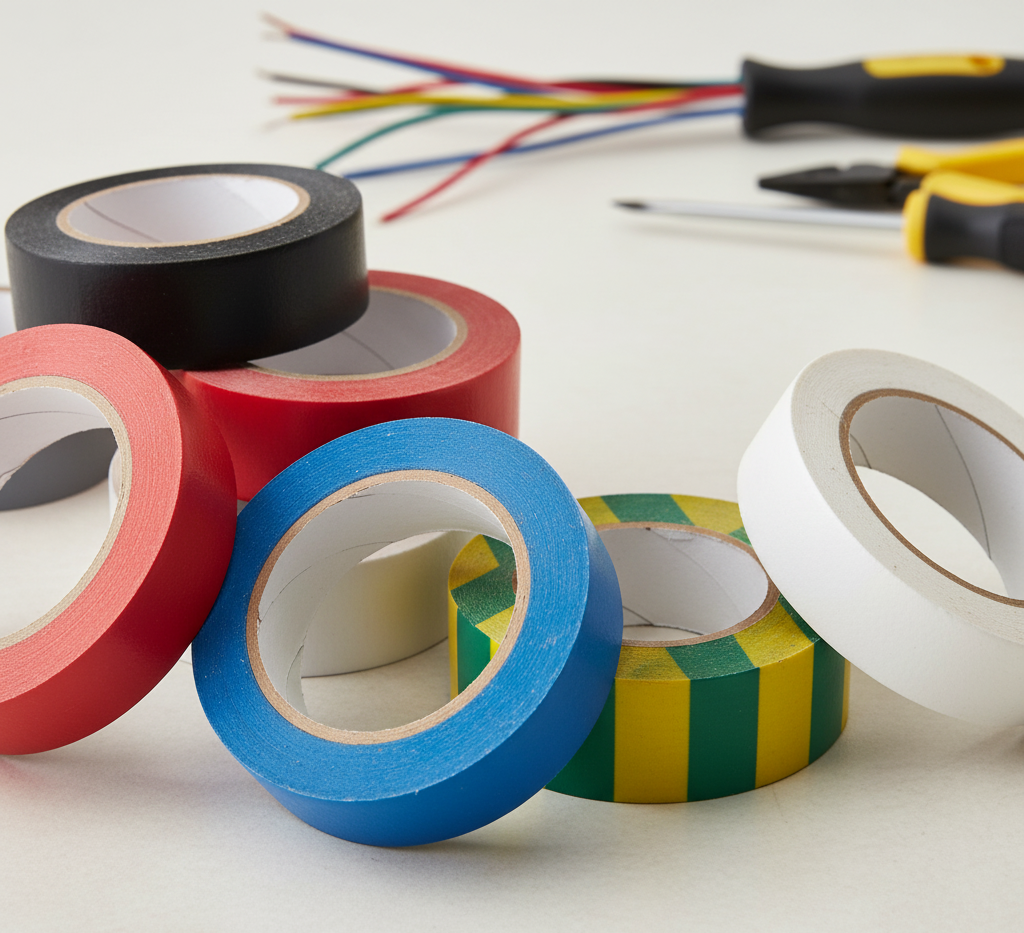Kingsgrove Branch:
Insulation Tape

G'day! Have a squiz in any Aussie tradie’s toolkit, and you're guaranteed to find a few rolls of colourful, plasticky tape. We’re talking about insulation tape – or as it's often called, electrical tape. It might look like a simple roll of sticky tape, but this bit of kit is a fair dinkum essential for safety and organisation in any electrical job.
But what exactly is it, and why can’t you just use regular sticky tape from the office drawer? Let's get into it.
So, What Exactly Is Insulation Tape?
At its core, insulation tape is a special type of pressure-sensitive tape used to insulate electrical wires and other materials that conduct electricity. It’s a first line of defence against accidental electric shocks and short circuits.
Unlike standard tape, it’s typically made from stretchy PVC (polyvinyl chloride) or vinyl which gives it some unique and vital properties:
- It’s a Terrible Conductor: This is its main job. It doesn’t conduct electricity, so when wrapped around a wire, it creates a safe, insulated barrier.
- It’s Tough as Nails: It’s built to withstand wear and tear, resisting moisture, abrasion, acids, and changing weather conditions.
- It’s Stretchy: Good quality insulation tape has a bit of stretch, allowing you to wrap it tightly around wires and connections to create a secure, long-lasting seal that won’t unravel.
Trying to use regular tape for an electrical job is a massive no-no. It offers almost no insulation, isn't durable, and can become a serious fire or safety hazard.
Decoding the Rainbow: What Do the Colours Mean in Australia?
The different colours aren't just for making your wiring look pretty. In Australia, they play a crucial role in identifying wires according to the AS/NZS 3000 wiring standards. For a professional sparky, this is second nature.
Here’s a basic rundown:
- Black, Brown, or Dark Blue: Often used for Active (Live) conductors.
- Light Blue: Used for the Neutral conductor.
- Green/Yellow Stripes: This is exclusively for Earth conductors. You never use this for anything else.
- White or Red: Can be used for specific applications, like identifying switch wires.
Using the right colour helps the next person who works on the wiring to quickly and safely identify what each wire does.
How to Use Insulation Tape Like a Pro
There’s a bit of a knack to applying insulation tape correctly. Just slapping it on won’t cut it.
- Start Clean: Make sure the wire or connection is clean and dry before you start.
- Stretch It a Bit: As you wrap, stretch the tape to about two-thirds of its original width. This tension helps it conform to the surface and creates a tight, moisture-proof seal as it tries to return to its original shape.
- Overlap It: Each layer should overlap the previous one by about half the tape's width. This ensures there are no gaps.
- Go Past the End: Make sure your wrap extends well past the bare or repaired section on both sides to provide complete insulation.
When to Use It (and When to Call a Pro)
Insulation tape is brilliant for minor wire repairs (like a small nick in the outer sheath), bundling cables together to keep things tidy, and colour-coding.
However, for joining wires, you should always use proper electrical connectors (like terminal blocks or wire nuts). Tape is for insulating, not for making strong mechanical connections. And for any serious electrical work, from installing a power point to rewiring a switchboard, you need to call a licensed electrician. Don’t risk it!
While a good roll of insulation tape is a must-have for every toolkit, professional electricians rely on top-quality components for safe and compliant installations. For a complete range of certified electrical supplies, from circuit protection to terminals and, of course, professional-grade insulation tapes, check out the gear at Schnap Electric Products to buy it. They stock the reliable products that Aussie tradies trust to get the job done right.
Recent posts

Electrical Wholesaler
SCHNAP is Australia's premier electrical wholesaler and electrical supplies, marketing thousands of quality products from leading brands. Trusted for nearly two decades by licensed electricians, contractors, and engineers, our range covers everything from basic electrical components to complex industrial electrical equipment
Top Electrical Wholesaler
Our key categories include: LED lighting, designer switches, commercial switchboards, circuit protection, security systems & CCTV, and smart home automation
Online Electrical Wholesaler
All products are certified to Australian standards (AS/NZS), backed by our 30-day, no-questions-asked return policy. Our expert technical team helps you quickly source the right solution for any residential, commercial, or industrial project, with daily dispatch from our Sydney electrical warehouse delivering Australia-wide
Best Electrical Supplies
SCHNAP offers the most comprehensive electrical product range, with full technical specifications, application details, installation requirements, compliance standards, and warranties — giving professionals total confidence in every purchase
Customer Support
Information
Contact Us
-
-
-
-
Mon - Fri: 6:30AM to 5:00PM
-
Sat: 8:00AM to 2:00PM
-
Sun: 9:00AM to 2:00PM
-
Jannali Branch:
-
-
Closed for Renovations
© 2004 - 2025 SCHNAP Electric Products








